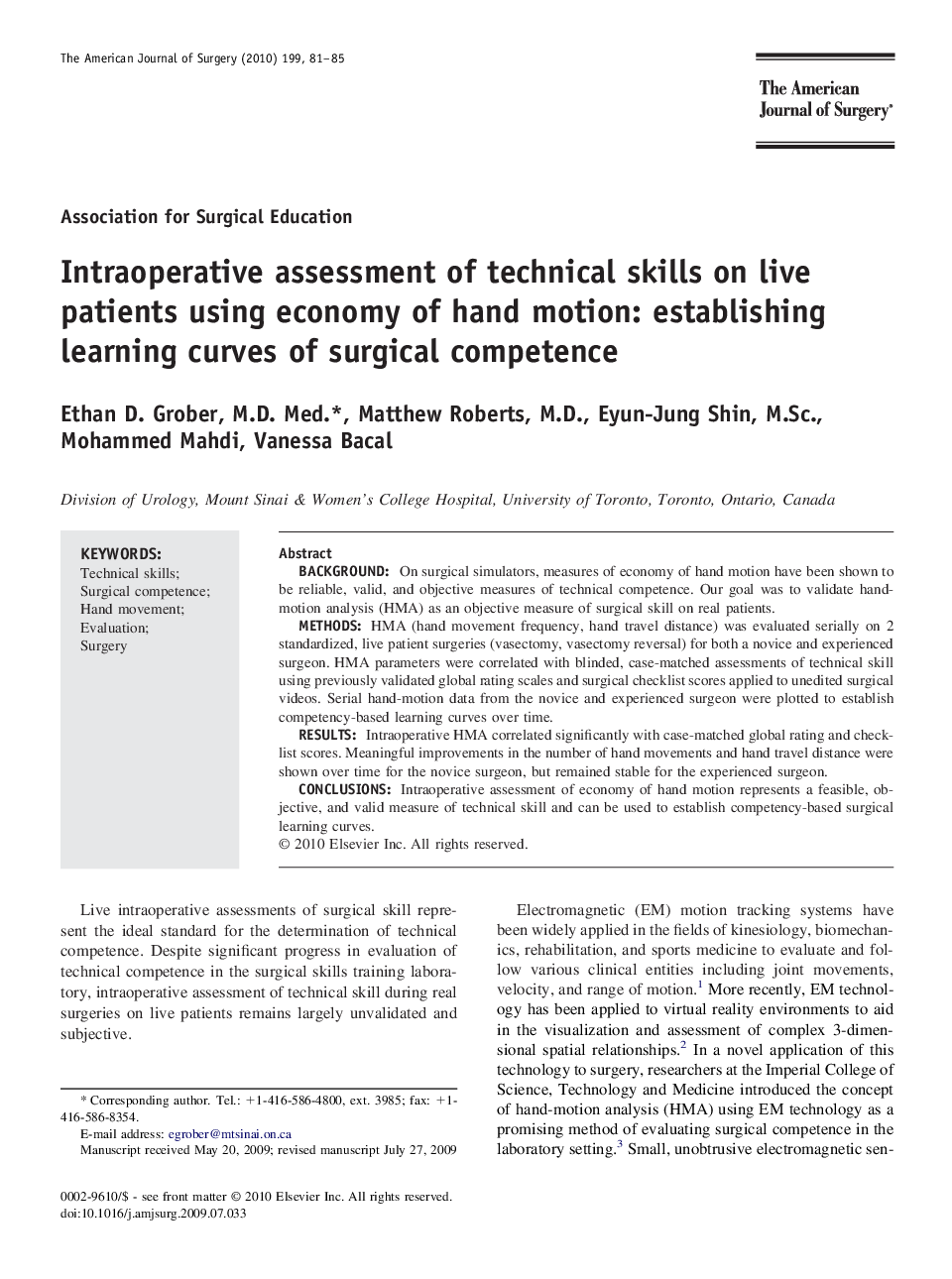| Article ID | Journal | Published Year | Pages | File Type |
|---|---|---|---|---|
| 4280441 | The American Journal of Surgery | 2010 | 5 Pages |
BackgroundOn surgical simulators, measures of economy of hand motion have been shown to be reliable, valid, and objective measures of technical competence. Our goal was to validate hand-motion analysis (HMA) as an objective measure of surgical skill on real patients.MethodsHMA (hand movement frequency, hand travel distance) was evaluated serially on 2 standardized, live patient surgeries (vasectomy, vasectomy reversal) for both a novice and experienced surgeon. HMA parameters were correlated with blinded, case-matched assessments of technical skill using previously validated global rating scales and surgical checklist scores applied to unedited surgical videos. Serial hand-motion data from the novice and experienced surgeon were plotted to establish competency-based learning curves over time.ResultsIntraoperative HMA correlated significantly with case-matched global rating and checklist scores. Meaningful improvements in the number of hand movements and hand travel distance were shown over time for the novice surgeon, but remained stable for the experienced surgeon.ConclusionsIntraoperative assessment of economy of hand motion represents a feasible, objective, and valid measure of technical skill and can be used to establish competency-based surgical learning curves.
